This article highlights seven motivational operants ABA strategies that are key for effective behavior change in individuals undergoing ABA therapy. By understanding motivating operations, clinicians can tailor interventions that not only enhance positive behaviors but also reduce undesired ones. This personalized and evidence-based approach ultimately leads to better therapeutic outcomes. Let’s explore this together!
Understanding the intricate dynamics of behavior is essential in the world of Applied Behavior Analysis (ABA) therapy, where motivational operants play a pivotal role. By exploring how environmental factors shape behavior, practitioners can create tailored interventions that resonate with each individual's unique motivations. In this article, we’ll dive into seven effective strategies centered around motivational operants, showing how they can enhance behavior change and improve therapeutic outcomes.
But what challenges come up when trying to implement these strategies? And how can caregivers actively participate in this transformative process? Let’s explore these questions together, illuminating the path toward more effective and personalized ABA therapy. We’re here to help you every step of the way!
Motivating operations (MOs) are those environmental events or conditions that really shape how effective reinforcers and punishers can be, influencing our actions. In ABA therapy, grasping the concept of motivational operants ABA is crucial for crafting effective interventions. When clinicians understand what drives a young person, they can tailor their methods to encourage positive behaviors while reducing the undesired ones. For instance, if a child is feeling hungry, food becomes a strong motivator, making them more likely to engage in actions that lead to food access. This understanding allows for more personalized and effective treatment plans, developed by certified analysts who create customized strategies with measurable objectives and evidence-based approaches. Continuous assessment and adjustments based on progress report data ensure that the therapy remains on track.
Here are some key points to keep in mind:
Let’s explore this together! Your involvement can make a big difference!
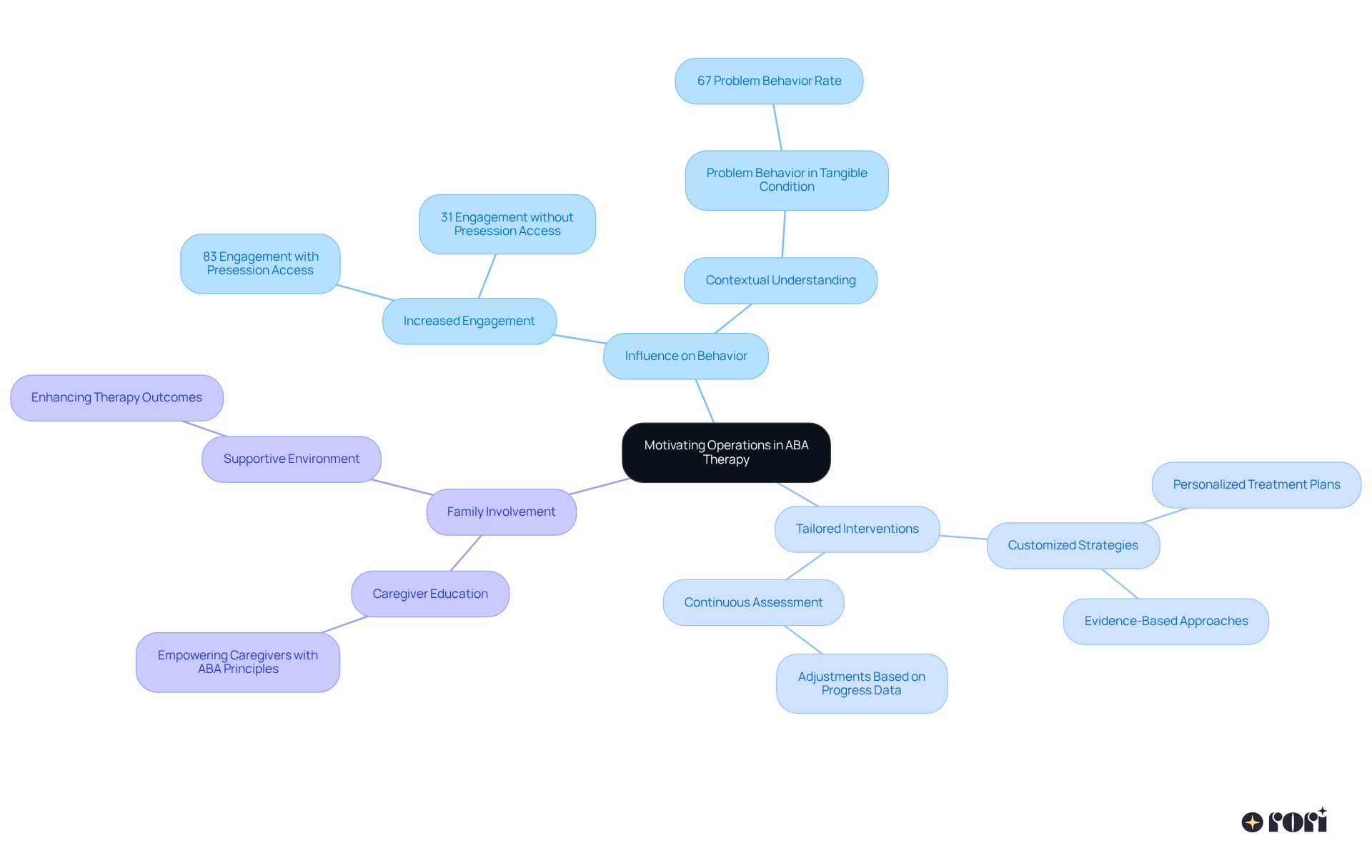
Establishing operations (EOs) are essential conditions that significantly enhance the effectiveness of motivational operants ABA in therapy. For instance, when a child is kept away from a favorite toy, that toy suddenly becomes much more appealing! This increase in appeal enhances the chances that the child will engage in activities aimed at getting it. By thoughtfully creating motivational operants ABA, therapists can significantly elevate the reinforcing value of certain stimuli, making it easier to encourage desired behaviors.
Here are some practical ways to implement this:
Let’s explore this together! By understanding and applying these concepts, we can support our children in meaningful ways.
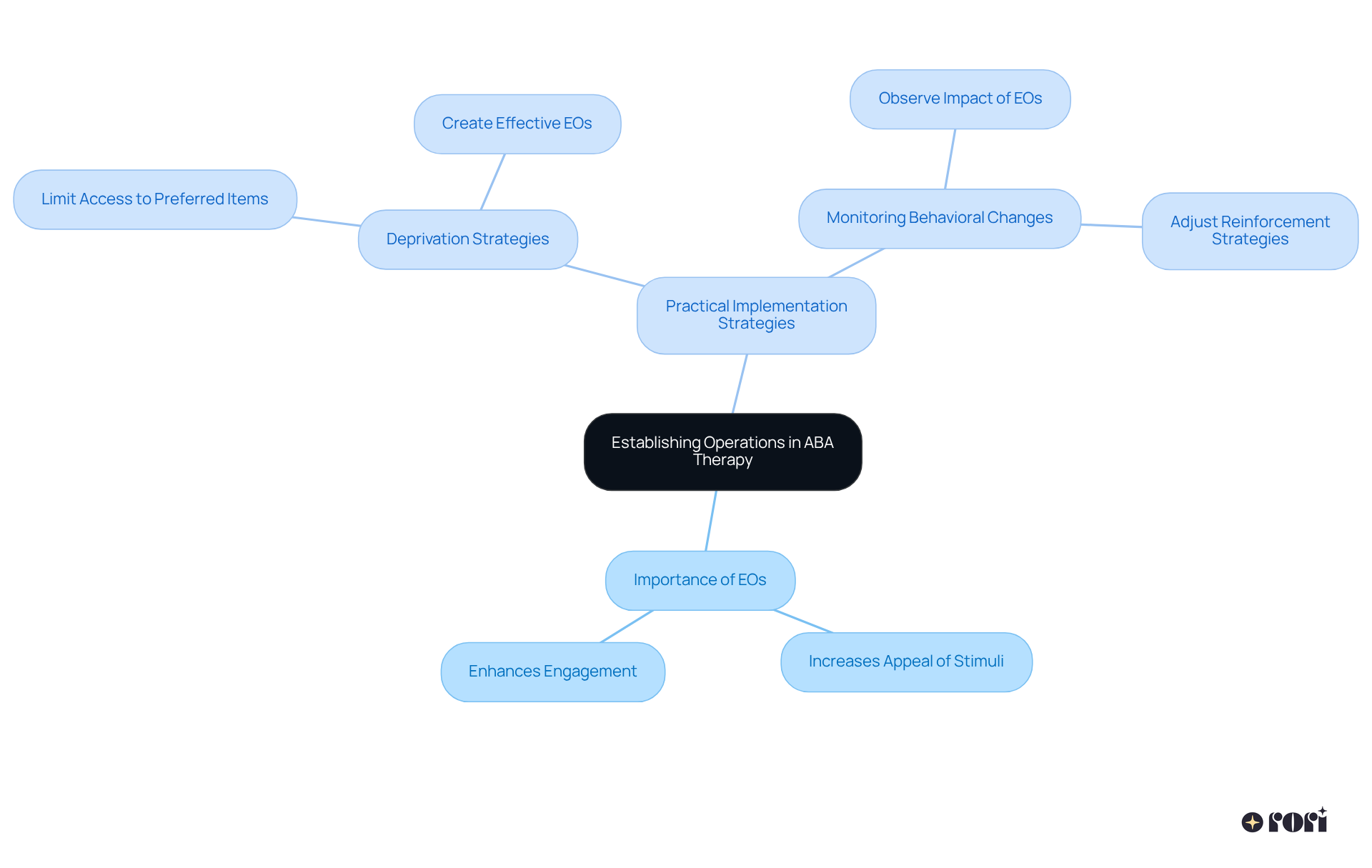
Abolishing operations (AOs) are important conditions that can really affect how effective a reinforcer is. For example, think about a young one who has just enjoyed a big meal. In that moment, the appeal of food as a motivator takes a dip, making it less likely for them to seek out snacks. By spotting and using AOs effectively, therapists can help lessen those unwanted behaviors by making certain reinforcers less appealing.
Strategies for Implementation:
Research shows that using AOs strategically can lead to real improvements in managing behaviors. For instance, when kids have enough access to their favorite items before sessions, they often get into fewer issues. This not only boosts their engagement in learning but also helps create a more positive atmosphere.
Incorporating motivational operants aba into behavioral strategies provides us with a deeper insight into motivation and how behaviors can change. By adjusting the conditions that affect how appealing reinforcers are, therapists can design effective interventions that cater to each child's unique needs, ultimately supporting their growth and independence. Let’s explore this together!
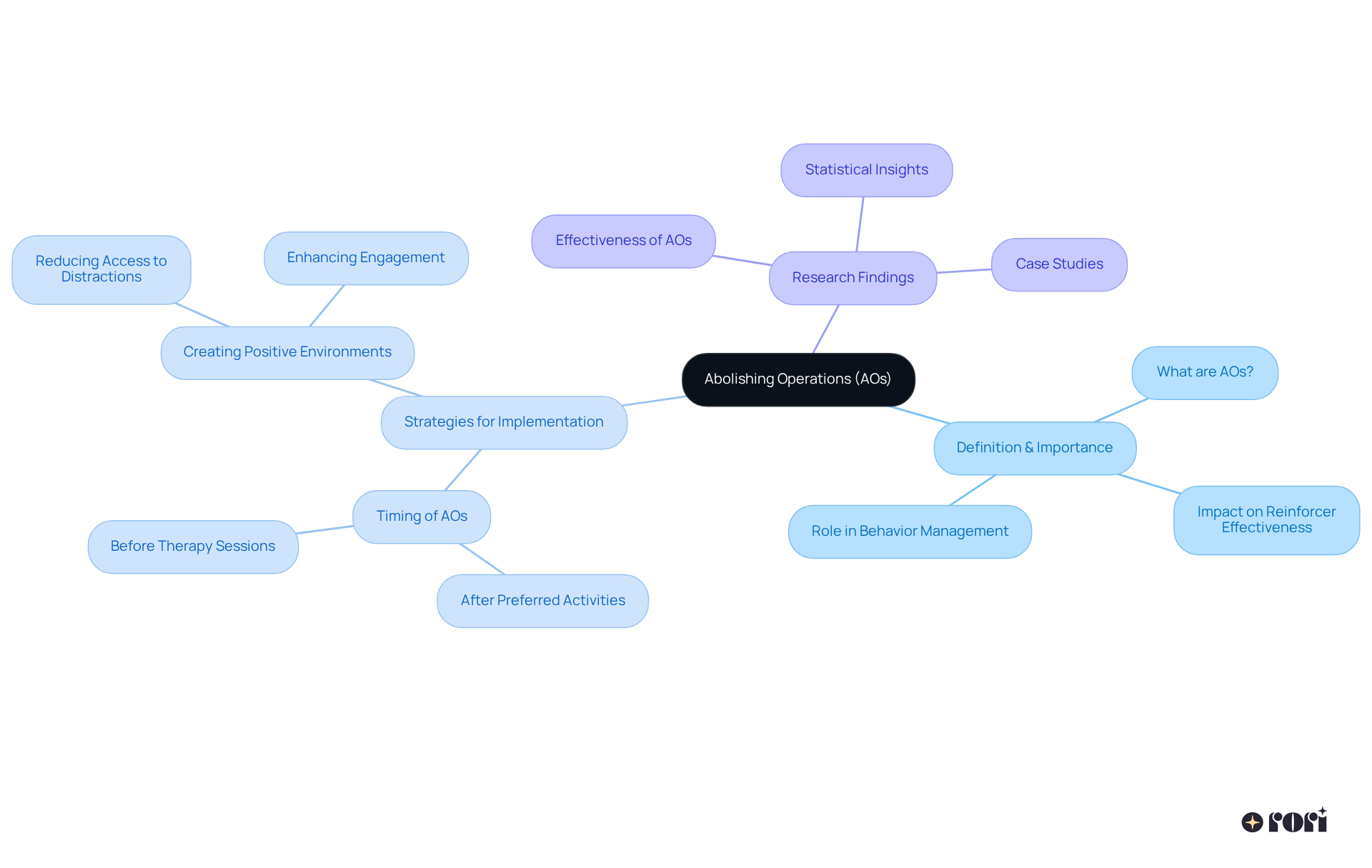
Understanding motivational operants aba can really enhance how parents connect with their kids. Let’s dive into some practical ways to apply this:
Hunger as an Establishing Operation (EO): When your child feels hungry, they’re more likely to seek out food, like asking for a snack or offering to help in the kitchen. This natural urge can be a great way to encourage positive interactions and teamwork.
Satiation as an Abolishing Operation (AO): After a kid has had plenty of screen time, their interest in video games might start to fade. This is the perfect moment to suggest outdoor activities or other fun alternatives, guiding their energy toward healthier choices.
Tips for Parents:
By recognizing and utilizing motivational operants aba, parents can create a nurturing environment that encourages positive actions and strengthens their bond with their children. Let’s explore this together!
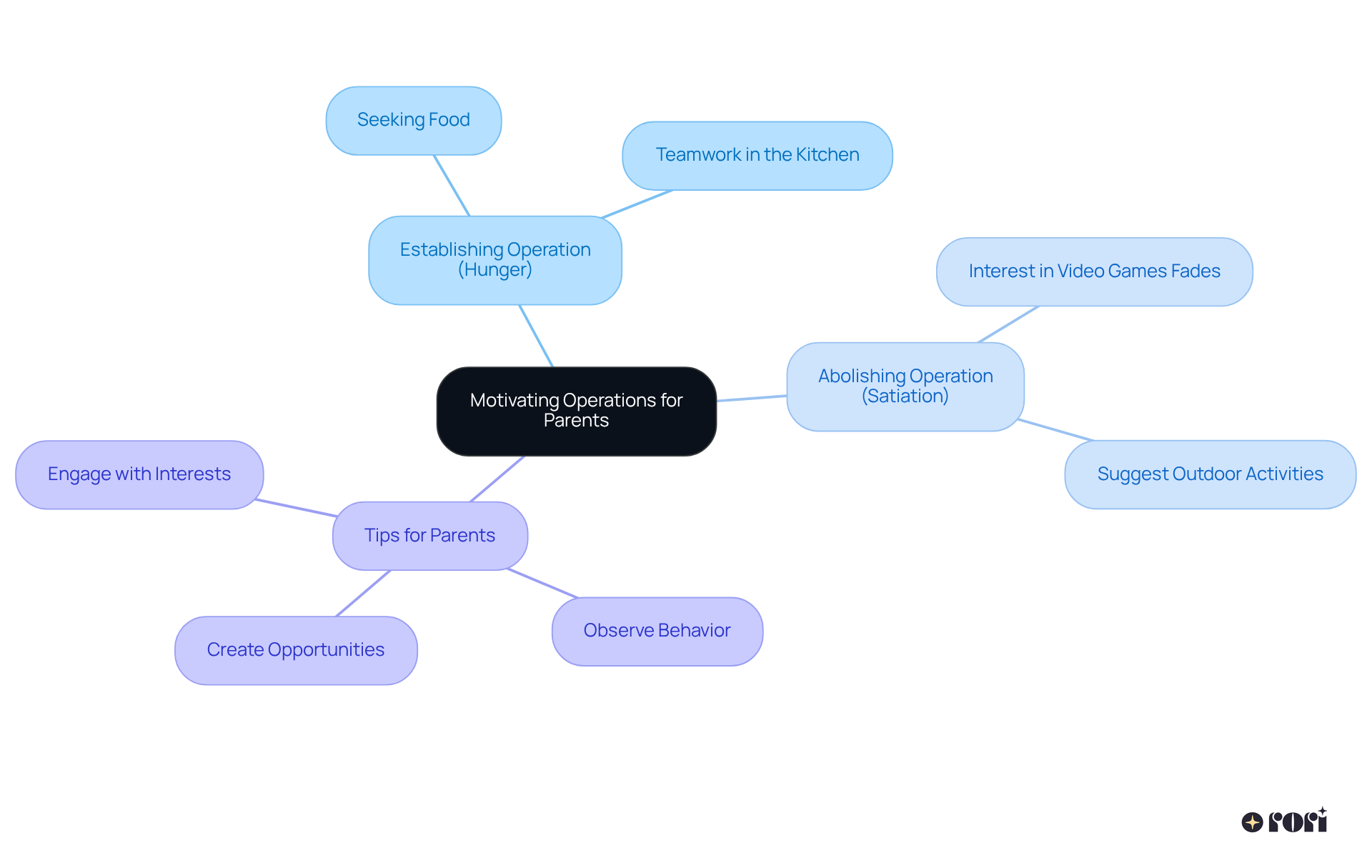
Motivating operations (MOs), also known as motivational operants ABA, are essential in shaping actions by influencing how likely certain behaviors are to happen. They have two primary roles: increasing or decreasing behaviors, which is crucial for effective intervention strategies.
Statistics really highlight the importance of these strategies in ABA therapy. For instance, long-term ABA interventions have shown medium to large effects on intellectual functioning, language development, and social skills, especially when started at a young age. Research shows that the benefits of early intervention can last up to 18 years. Plus, about 66% of kids referred for ABA therapy start treatment and stay engaged for at least 12 months, showcasing the effectiveness of well-organized intervention strategies and the crucial role of skilled analysts in this journey.
Understanding the functions of motivational operants ABA is vital for behavior analysts. Experts in the field emphasize that being able to manipulate motivational operants ABA can greatly enhance the effectiveness of interventions. By grasping how motivational operants ABA influence behaviors, practitioners can develop more effective methods for encouraging or reducing behaviors, ultimately leading to better outcomes for individuals with autism.
Let’s explore this together! We’re here to help you every step of the way!
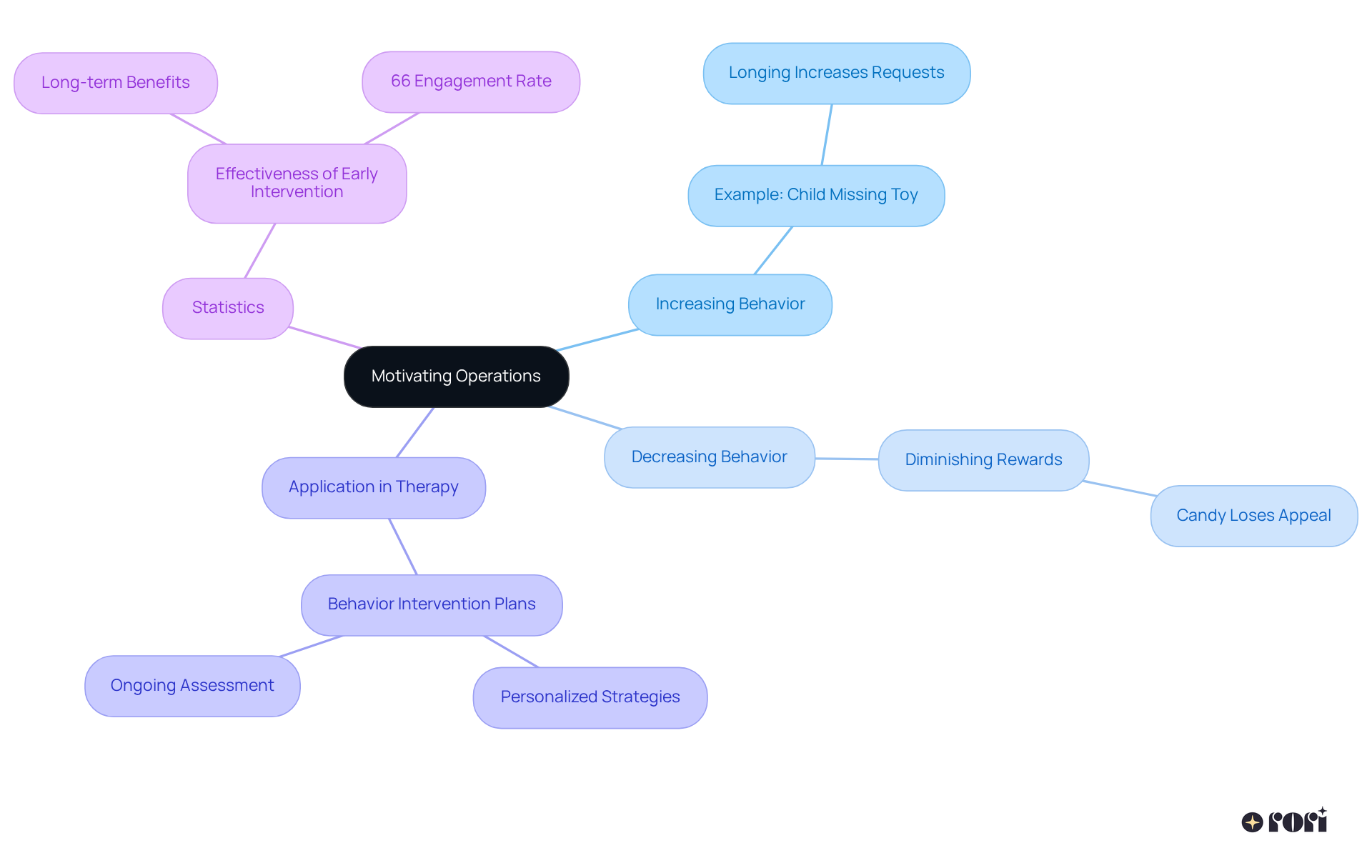
Evaluating motivational operants aba is essential for tailoring interventions that truly meet the unique needs of each individual. Let’s dive into some effective strategies for conducting these assessments!
Functional Behavior Assessment (FBA): Think of an FBA as a systematic approach that helps us pinpoint the specific MOs influencing a child's behavior. This evaluation sheds light on the environmental factors that play a role in their actions, paving the way for focused interventions.
Observation: Regular observations in different settings are key to spotting behavioral patterns linked to MOs. By watching how a young person interacts in various environments, caregivers and clinicians can uncover the triggers and reinforcers that shape their conduct.
Steps for Effective Assessment:
Research shows that 90% of individuals make significant progress when caregivers are actively involved in ABA therapy. This really highlights the importance of collaboration in the assessment process! By recognizing and adjusting motivational operants aba, practitioners can create interventions that resonate with each person’s unique motivations, ultimately leading to better therapeutic outcomes.
Let’s explore this together! We’re here to help you every step of the way!
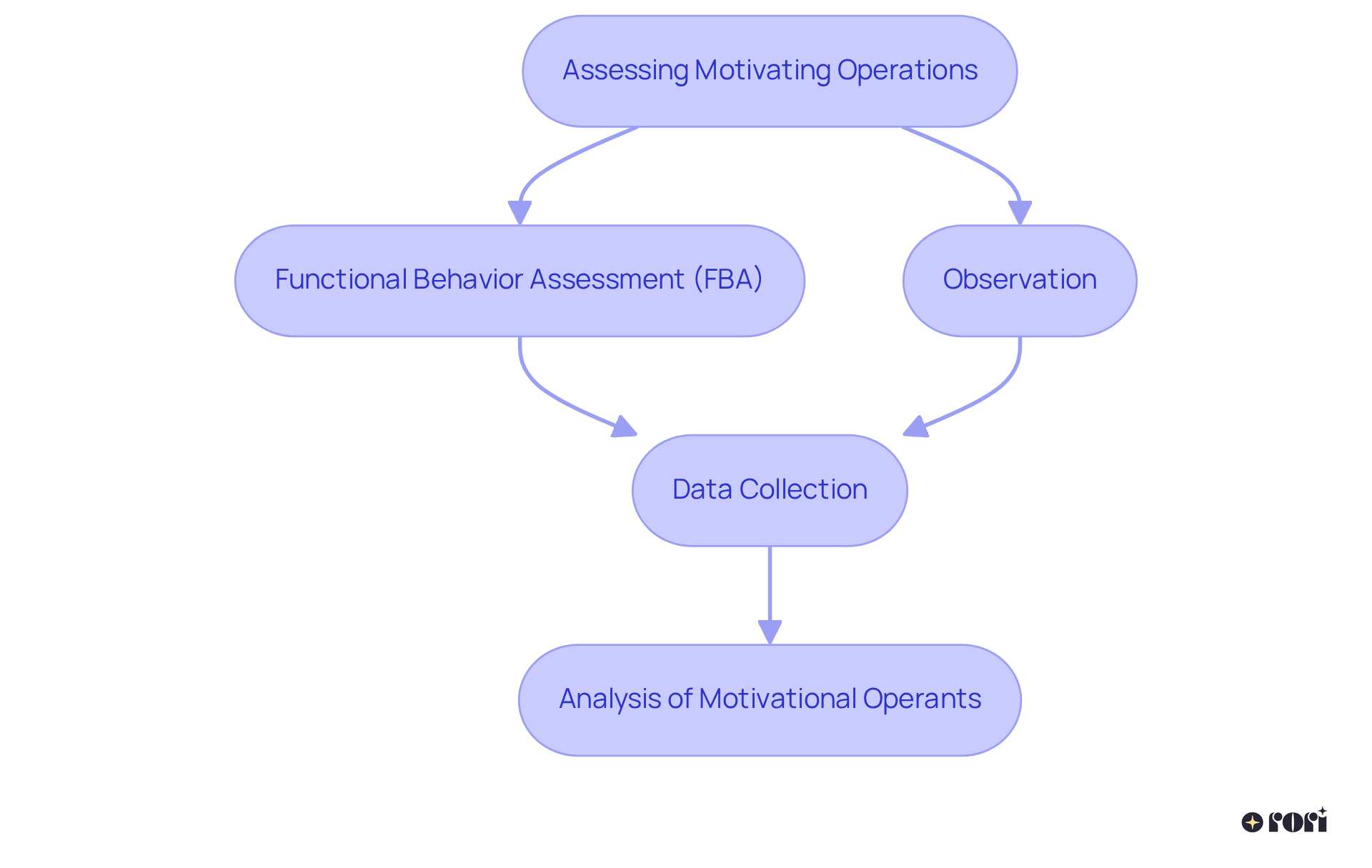
Altering the surroundings can be a powerful way to employ motivational operants aba to motivate positive changes in individuals with autism. Let’s dive into some effective strategies!
Create Deprivation Conditions: When we limit access to preferred items, their value as reinforcers actually increases! This makes them more effective in motivating desired behaviors. Did you know that research shows 90% of youngsters receiving intensive ABA therapy saw significant improvements? This highlights just how important effective reinforcement strategies can be. By focusing on each individual’s unique needs, we can customize interventions for the best results.
Reduce Distractions: Imagine creating a calm and focused environment! This can really enhance learning opportunities and reduce unwanted behaviors. A case study on motivational operants aba demonstrates how changing the environment can result in meaningful behavior changes. It reinforces the power of early intensive behavioral intervention (EIBI) in boosting learning, verbal, and social skills for individuals with autism.
Practical Tips:
Let’s explore this together! We’re here to help you every step of the way!
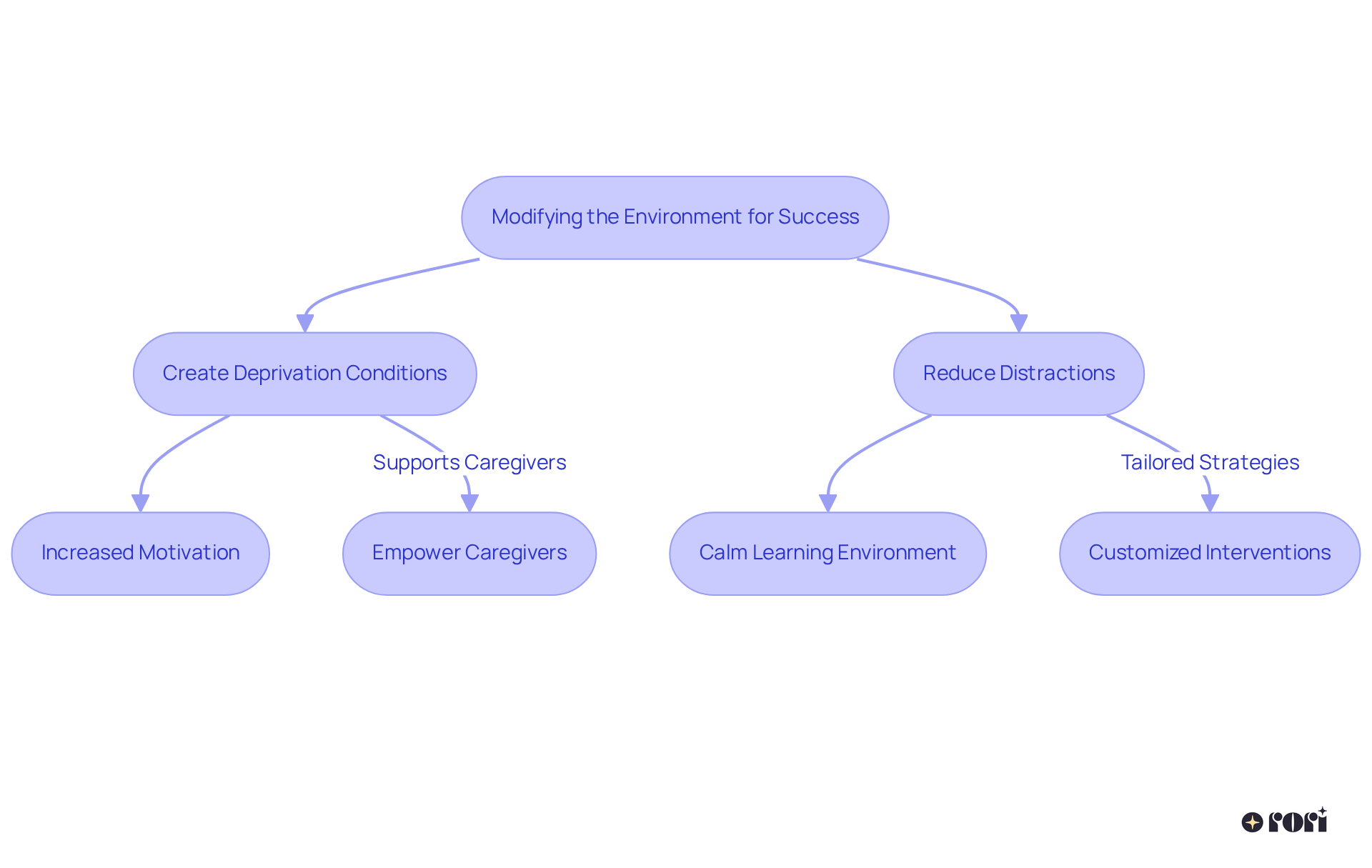
To encourage positive behaviors, it's important to enhance the reinforcing value of those behaviors, in accordance with Rori Care - ABA Therapy's mission to empower families through effective ABA therapy that incorporates motivational operants aba. Here are some friendly strategies to consider:
Implementation Tips:
Let’s explore this together! Your involvement makes a world of difference!
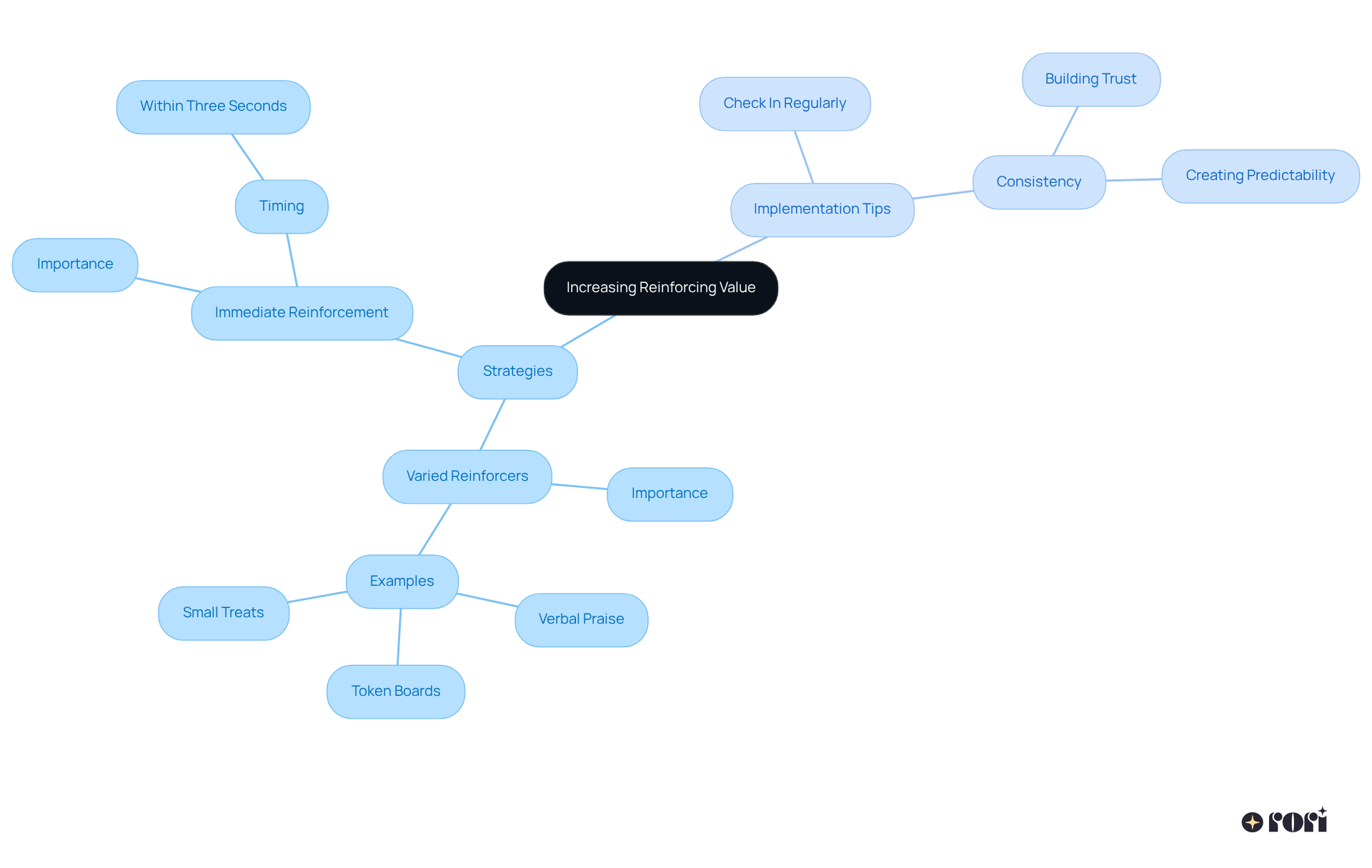
Motivational operants ABA are crucial in shaping learning and actions within ABA therapy. By grasping how MOs impact a young person's motivation, therapists can craft interventions that truly resonate with each individual's unique needs. A qualified behavior analyst is key here, designing personalized plans that include measurable goals and evidence-based strategies aimed at fostering positive behavior changes and skill acquisition.
For example, engaging a child through their interests can work wonders! Imagine using dinosaur-themed activities for a child who loves dinosaurs—this approach can significantly enhance motivation and learning outcomes. Similarly, being aware of a child's emotional state, like recognizing when they feel overwhelmed, allows therapists to adjust tasks, ensuring they remain achievable. This flexibility not only sustains motivation but also nurtures a positive learning environment.
Moreover, empowering caregivers with ABA principles and techniques boosts their ability to support their child's behavioral objectives through active involvement and data collection. When caregivers are well-informed, they can make decisions that positively impact their child's progress, leading to improved behavioral outcomes. Understanding motivational operants ABA is crucial for tailoring interventions and enhancing the overall effectiveness of ABA therapy. By aligning therapeutic approaches with a young person's motivations through motivational operants ABA, therapists can create more meaningful learning experiences and encourage positive behavioral changes.
Plus, continuous assessment and adjustments to these plans ensure responsiveness to the individual's evolving needs. Parents are warmly invited to take advantage of our Free Consultation to discover how these strategies can be customized for their child. Let’s explore this together!
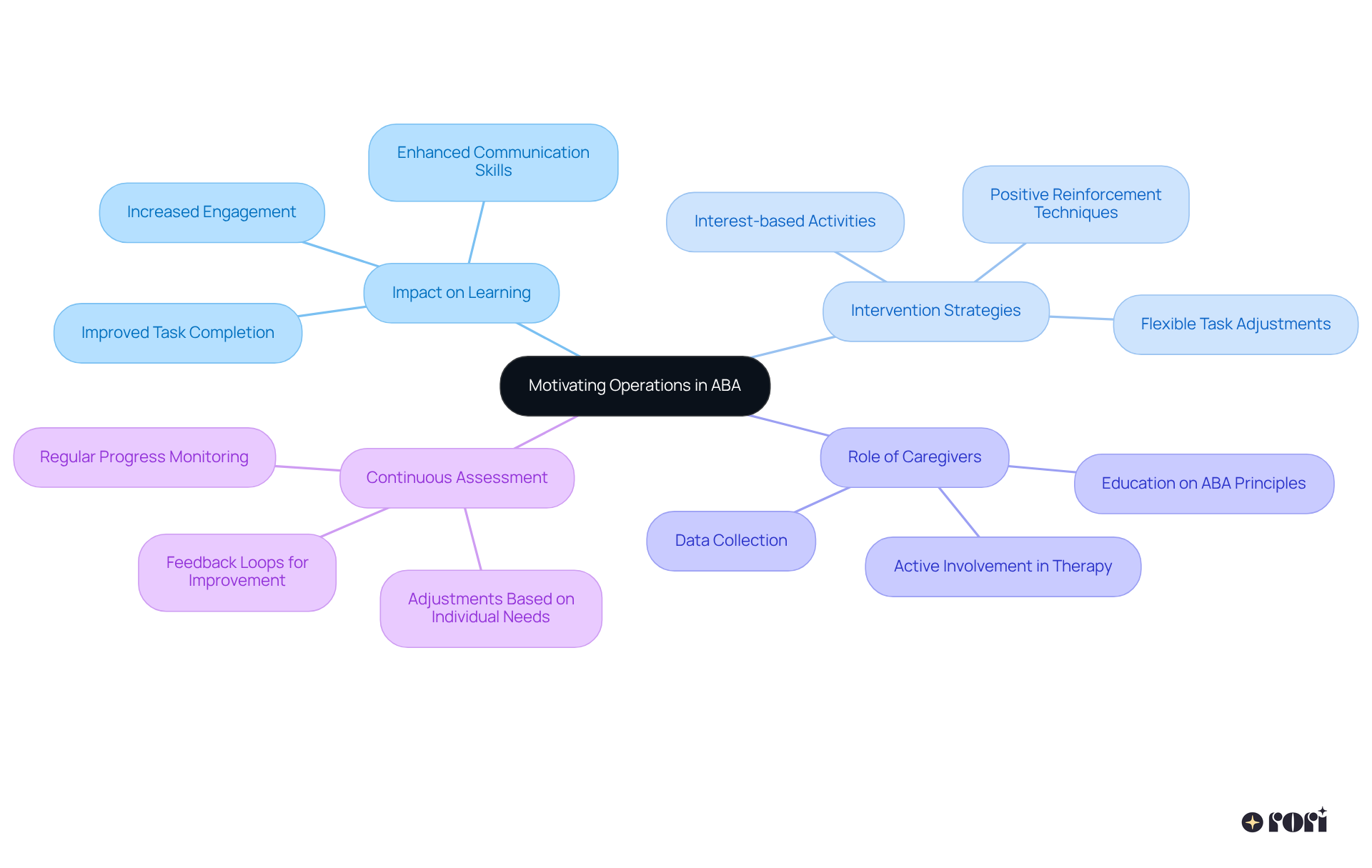
Technology is truly transforming how we apply motivational operants ABA in therapy! Let’s dive into some exciting ways technology can enhance our practice:
Data Collection Tools: Imagine using apps and software to track behaviors and spot patterns related to motivating operations (MOs). This makes decision-making so much easier! Plus, automatic data collection during sessions keeps everything secure and confidential, allowing for safe post-analysis deletion.
Interactive Learning Platforms: How about incorporating gamified learning experiences that adapt to what your child loves? This not only boosts engagement but also helps caregivers gain the knowledge and skills to support their child's behavioral goals. It’s all about aligning strategies and collecting effective data!
Future Directions:
We’re here to help you every step of the way! Let’s explore this together and see how these innovations can make a difference in your journey.
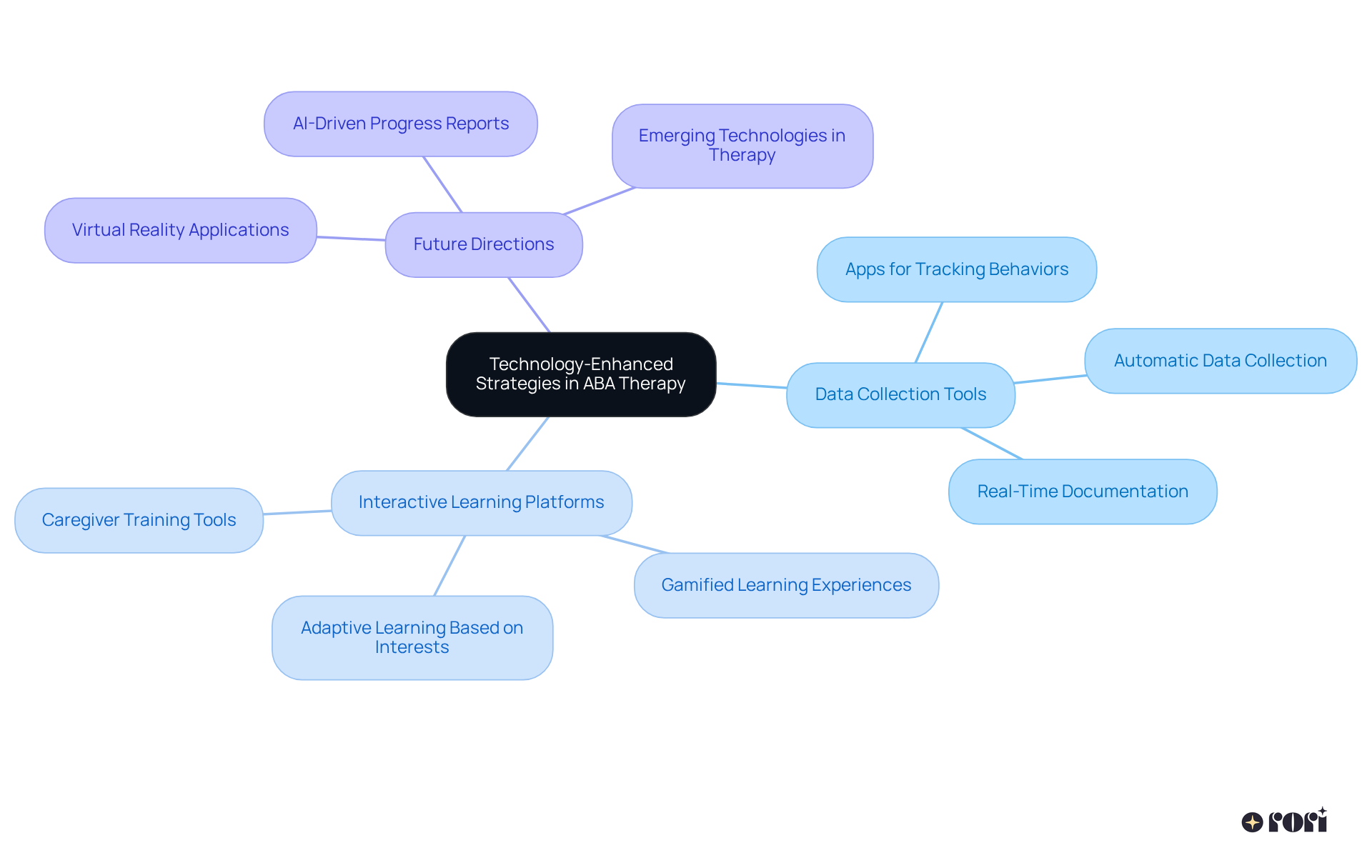
Understanding and applying motivational operants in ABA therapy is essential for fostering effective behavior change. By recognizing how environmental factors influence motivation, therapists can develop targeted interventions that resonate with each child's unique needs. This personalized approach not only enhances engagement but also supports the overall therapeutic process, making it more impactful and meaningful.
Throughout this journey, we’ve explored key concepts like establishing operations (EOs) and abolishing operations (AOs). These concepts play a vital role in increasing or decreasing behaviors. Practical strategies for parents and caregivers, such as observing behaviors and modifying environments, empower them in their child's developmental journey. Plus, the integration of technology in ABA therapy opens up exciting opportunities for data collection and personalized learning experiences that can truly revolutionize how interventions are delivered.
In conclusion, leveraging motivational operants in ABA therapy is crucial for achieving positive outcomes in behavior modification. It’s so important for caregivers and professionals to collaborate closely, using these insights to create supportive environments that encourage growth and independence. Embracing these strategies can lead to a transformative journey for individuals with autism. Let’s explore this together, underscoring the importance of understanding and applying motivational operants for effective behavior change!
What are motivating operations (MOs) in ABA therapy?
Motivating operations (MOs) are environmental events or conditions that influence how effective reinforcers and punishers are, shaping our actions. Understanding MOs is crucial for creating effective interventions in ABA therapy.
How do MOs affect behavior?
MOs can significantly influence the likelihood of specific behaviors occurring. For example, if a child is hungry, food becomes a strong motivator, increasing the chances of behaviors that lead to food access.
Why is understanding MOs important for clinicians?
By understanding what drives a young person, clinicians can tailor their methods to encourage positive behaviors and reduce undesired ones, leading to more personalized and effective treatment plans.
What role does family involvement play in ABA therapy?
Family involvement enhances therapy outcomes by providing a supportive environment for individuals with autism. Educating caregivers on ABA principles empowers them to support their child's behavioral goals.
What are establishing operations (EOs)?
Establishing operations (EOs) are conditions that enhance the effectiveness of motivational operants in therapy. For example, limiting access to a favorite toy can make it more appealing, increasing the likelihood of desired behaviors.
How can therapists implement EOs in therapy?
Therapists can use deprivation strategies by limiting access to preferred items before sessions and observing behavioral changes to assess the impact of EOs on reinforcement effectiveness.
What are abolishing operations (AOs)?
Abolishing operations (AOs) are conditions that reduce the effectiveness of a reinforcer. For instance, after a child has eaten a large meal, the appeal of food as a motivator decreases.
How can AOs be used to manage undesired behaviors?
Therapists can identify moments when AOs can be applied, such as after a child has had ample time with a favorite toy, to lower its reinforcing value and reduce unwanted behaviors.
What are the benefits of using AOs strategically?
Using AOs can lead to improvements in behavior management, as children may engage in fewer issues when they have enough access to their favorite items before sessions, resulting in a more positive learning environment.
How do motivational operants contribute to effective interventions?
By adjusting conditions that affect the appeal of reinforcers, therapists can design interventions that cater to each child's unique needs, supporting their growth and independence in a meaningful way.